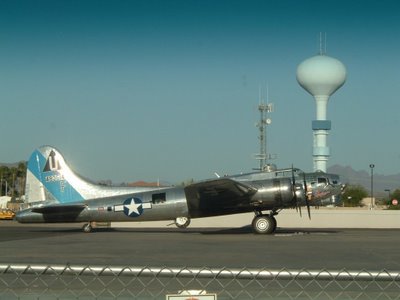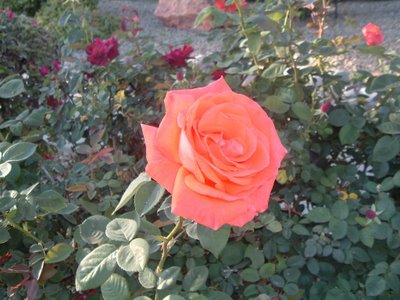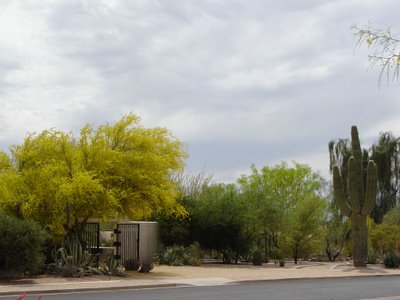 The rhyolite Tuff in the background is from the same event as the stripe on Pass Mountain, I'm told. Rhyolite like this stuff forms when an explosive eruption hurls lava high into the atmosphere. If it's still hot enough when it falls, it welds together and forms "tuff" (which is fairly soft rock).
The rhyolite Tuff in the background is from the same event as the stripe on Pass Mountain, I'm told. Rhyolite like this stuff forms when an explosive eruption hurls lava high into the atmosphere. If it's still hot enough when it falls, it welds together and forms "tuff" (which is fairly soft rock).The Palo Verde blooms bright yellow if there's enough water around.












